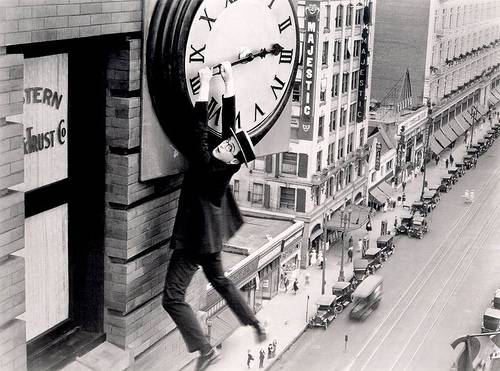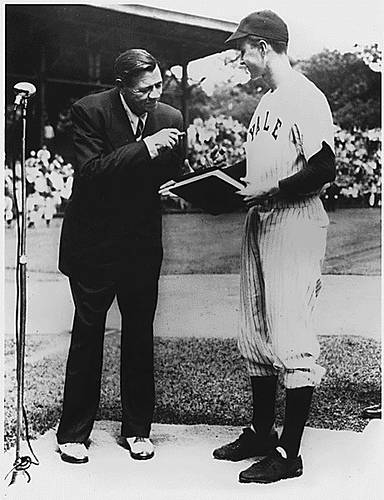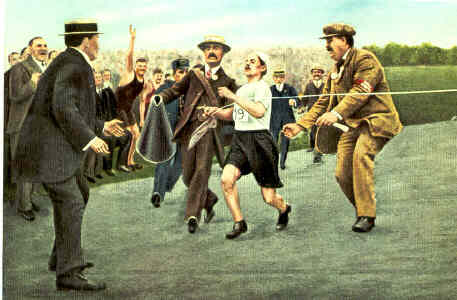“I’m just glad it’ll be Clark Gable who’s falling on his face, and not Gary Cooper.” — Gary Cooper, declining the lead role in Gone with the Wind
Entertainment
Boomerang
In seeking a costume for the character Professor Marvel in the The Wizard of Oz, the MGM wardrobe department found a tattered Prince Albert coat in a secondhand store in Los Angeles.
One afternoon actor Frank Morgan turned out the coat’s pocket and discovered the name “L. Frank Baum.” By a bizarre coincidence, they had chosen a coat once owned by the author of The Wonderful Wizard of Oz.
This sounds dubious, I know, but cinematographer Hal Rosson, his niece Helene Bowman, and unit publicist Mary Mayer have all vouched for the story.
“We wired the tailor in Chicago and sent pictures,” Mayer told Aljean Harmetz for the book The Making of The Wizard of Oz. “And the tailor sent back a notarized letter saying that the coat had been made for Frank Baum. Baum’s widow identified the coat, too, and after the picture was finished we presented it to her. But I could never get anyone to believe the story.”
Unquote

“Who the hell wants to hear actors talk?” — H.M. Warner, co-founder of Warner Brothers, 1927
Live and Let Die
James Bond never really explains why he likes his martinis “shaken, not stirred,” so in 1999 the University of Western Ontario’s biochemistry department decided to find out.
They discovered that a shaken gin martini has stronger antioxidant properties than a stirred one — which would help Bond avoid cardiovascular disease, stroke, and cataracts.
In their writeup for the British Medical Journal, they conclude, “007’s profound state of health may be due, at least in part, to compliant bartenders.”
See also Silly Old Bear.
Strange Bedfellows

In 1948, a few months before his death, Babe Ruth visited Yale to donate a copy of his autobiography. He presented it to the captain of the school’s baseball team.
The captain’s name was George Bush.
Unquote
“It will be gone by June.” — Variety, writing off rock ‘n’ roll, 1955
The Agony of Defeat

Italian marathoner Dorando Pietri was exhausted and dehydrated as he neared the finish line in the 1908 Olympic Games, and when he entered the stadium he took a wrong turn and collapsed. The umpires helped him up, but he stumbled further and collapsed again. 75,000 agonized spectators watched him fall three more times before he found the finish line; of his total time of 2:54:46, he spent fully 10 minutes on the last 350 meters.
Unbelievably, they disqualified him. The American team complained that he’d received help from the umpires, and he was removed from the final standings. But Queen Alexandra gave him a silver cup, at the suggestion of Arthur Conan Doyle, and Irving Berlin wrote a song for him. He died in 1942 at age 56.
Apt
Rearrange the letters in ALEC GUINNESS and you get GENUINE CLASS.
Flowers Would Have Done
Noël Coward was never one for simple congratulations. He sent this telegram to actress Gertrude Lawrence on her debut:
A WARM HAND ON YOUR OPENING
He sent another when she married Richard Aldrich:
DEAR MRS. A HOORAY HOORAY
AT LAST YOU ARE DEFLOWERED
ON THIS AS EVERY OTHER DAY
I LOVE YOU – NOEL COWARD
Here’s Looking At …

In 1982, writer Chuck Ross transcribed the screenplay of Casablanca. He changed the title to Everybody Comes to Rick’s, and he changed the piano player’s name to Dooley Wilson. Then he submitted it to 217 Hollywood agencies.
Only 85 read it. Of those, 38 rejected it outright, 33 recognized it (but only eight specifically as Casablanca), and only three declared it commercially viable.
One suggested turning it into a novel.
See also The Steps Experiment.
